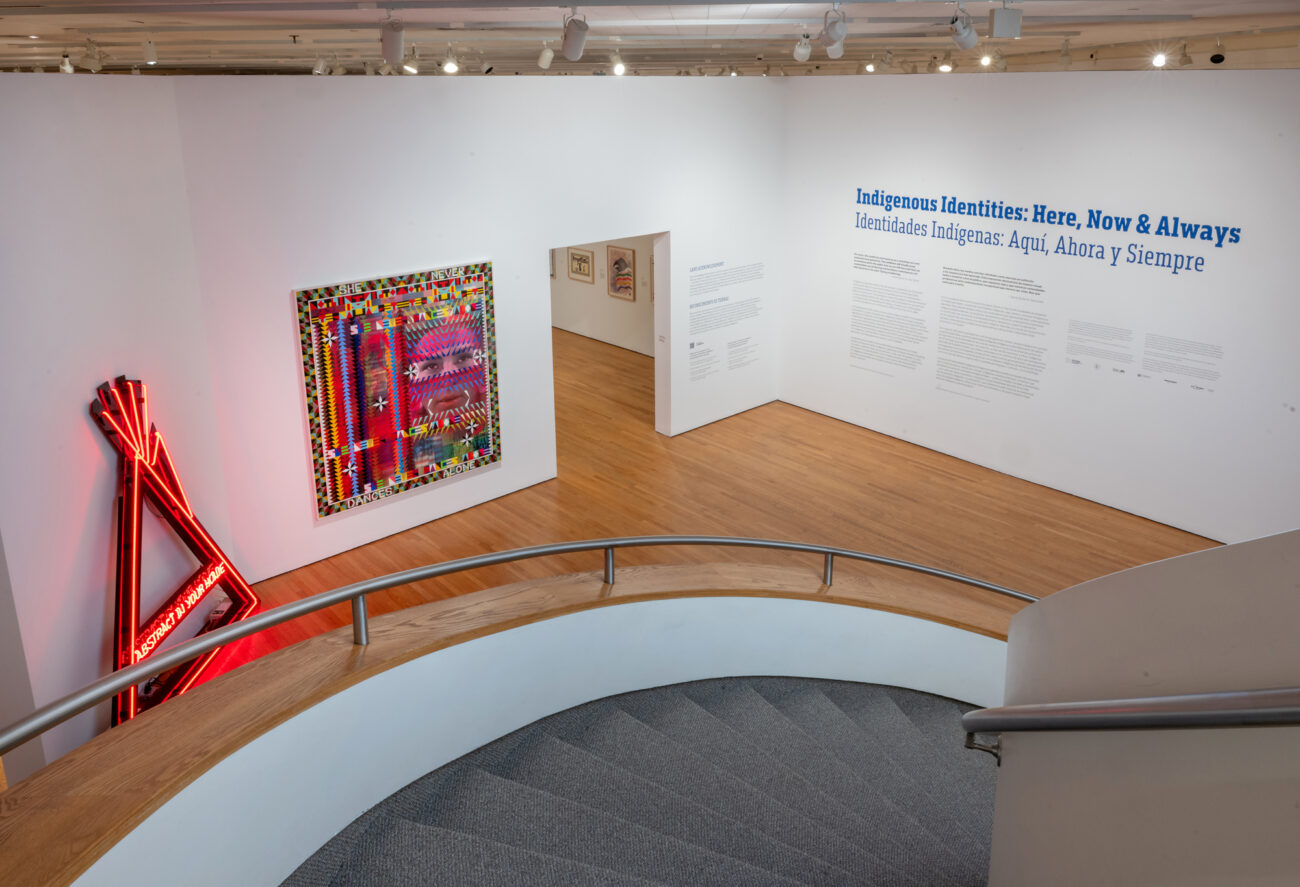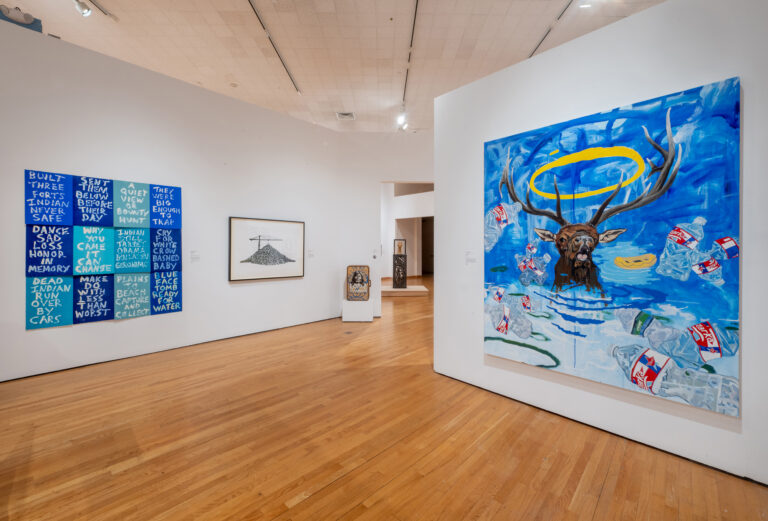
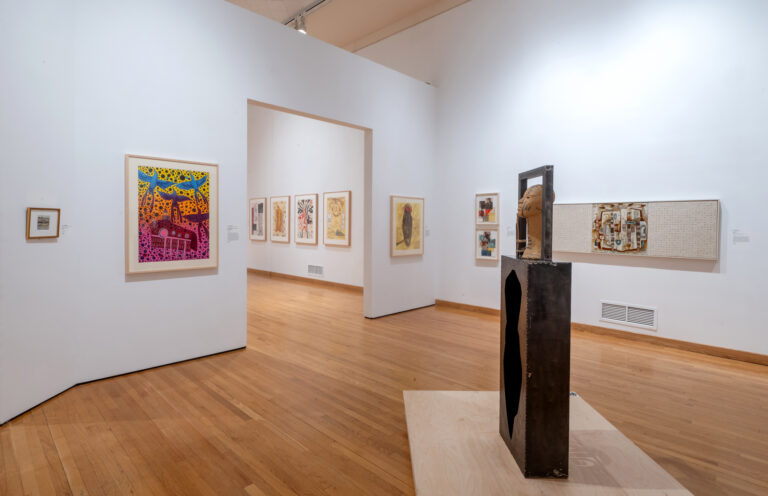
Tia Collection is proud to participate in the landmark exhibition Indigenous Identities: Here, Now & Always at the Zimmerli Art Museum at Rutgers University, on view from February 1 to December 21, 2025. Curated by Jaune Quick-to-See Smith (1940–2025), an enrolled Salish member of the Confederated Salish and Kootenai Nation, this exhibition stands as one of the most comprehensive surveys of contemporary Native American art to date.
Featuring 103 works by 97 living artists who represent more than 74 Indigenous nations and communities across North America—including 27 pieces on loan from Tia Collection—the exhibition spans a dynamic range of media: painting, works on paper, photography, ceramics, beadwork, weaving, sculpture, installation, and video. It is a resounding affirmation of the diversity, complexity, and vibrancy of contemporary Indigenous art.
Jaune Quick-to-See Smith, a towering figure in the art world, once observed: “For years, the media has portrayed us as a vanishing race, and museums historically have ignored us. It’s an interesting moment that we find ourselves having captured the attention of the art world. My hope with exhibitions like this one is to place Native Americans in our contemporary present and in every possible future.”
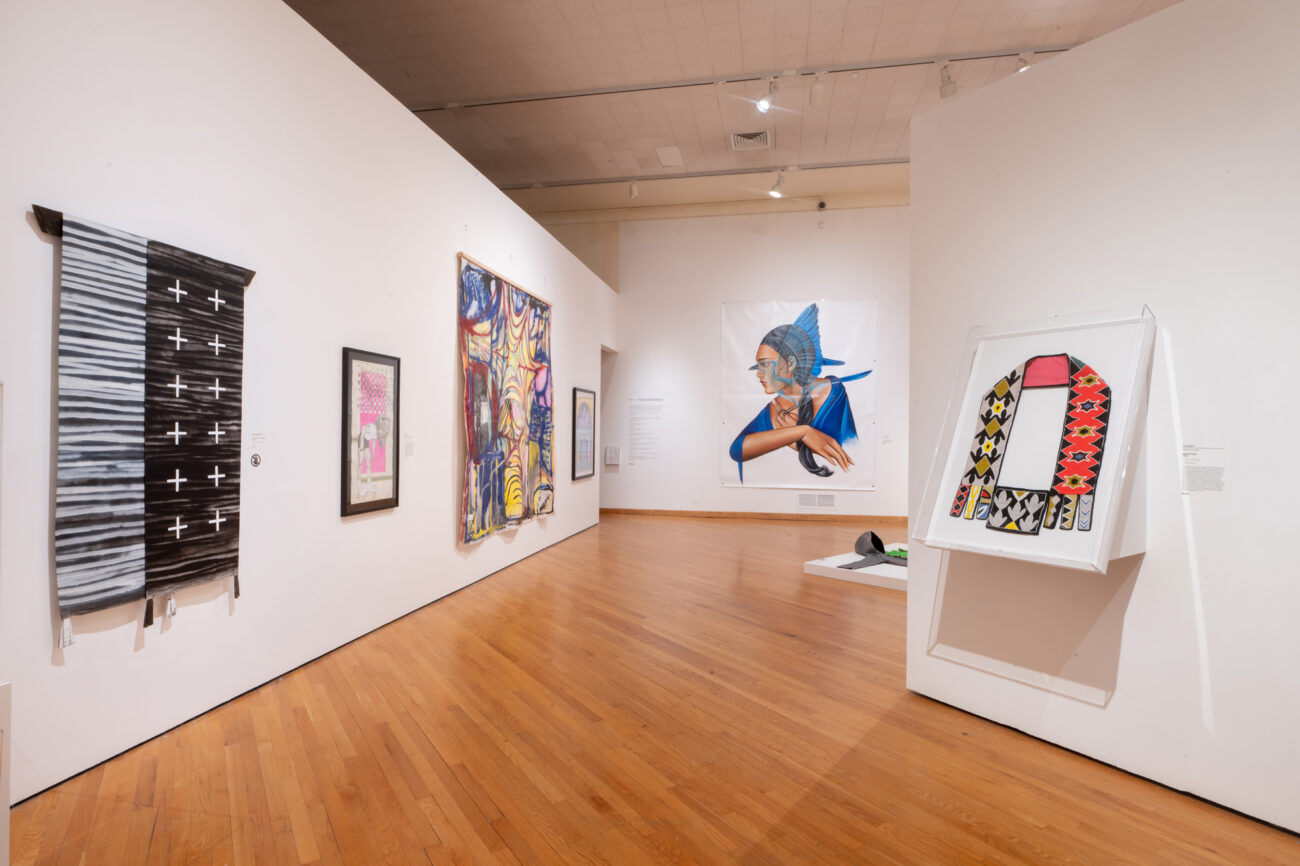
The exhibition unfolds across four thematic sections—“Political,” “Social,” “Land,” and “Tribal”—each offering a lens through which to engage with the multiplicity of Indigenous experiences. In the “Political” section, Neal Ambrose-Smith’s Abstract in Your Home (2009)—a neon teepee sculpture emblazoned with its title and pictured in the first image—challenges the tension between commodification and humanity.
A recurrent thread in the “Political” section is the persistence of injustices against Indigenous people. Marie Watt simultaneously references both the Seneca practice of commemorating milestones with blankets, and the eighteenth-century British imperialist tactic of giving blankets contaminated with smallpox to vulnerable Indigenous populations in Skywalker/Skyscraper (Twins) (2020). The sculpture, two identical stacks of blankets pierced through the center by steel beams, fuses the complex symbolism of the blankets with the building materials of the Mohawk ironworkers, also known as “sky walkers”, who were the unsung heroes shaping the skylines of North American cities.
The “Land” section, conversely, embraces the holistic worldview of Native peoples. As Quick-to-See Smith poignantly asserts, “Natives of the Americas live in a holistic world without a horizon line.” This ethos finds vivid expression in Emmi Whitehorse’s Rushing Water Series (2001), where an answered prayer for water transforms into sweeping, bloody thickets of brushstrokes—a visual anthem of both struggle and renewal. Jordan Ann Craig similarly flattens a tumultuous thunderstorm into a high-contrast symmetrical geometric pattern in Colliding Clouds (2020), hybridizing Northern Cheyenne and De Stijl motifs.
In the “Tribal” section, works celebrate cultural and collective resilience—a steadfast refusal to adhere to the enduring myth of the “vanishing Indian.” This exhibition is not just an artistic survey; it is an assertion of presence, identity, and continuity.
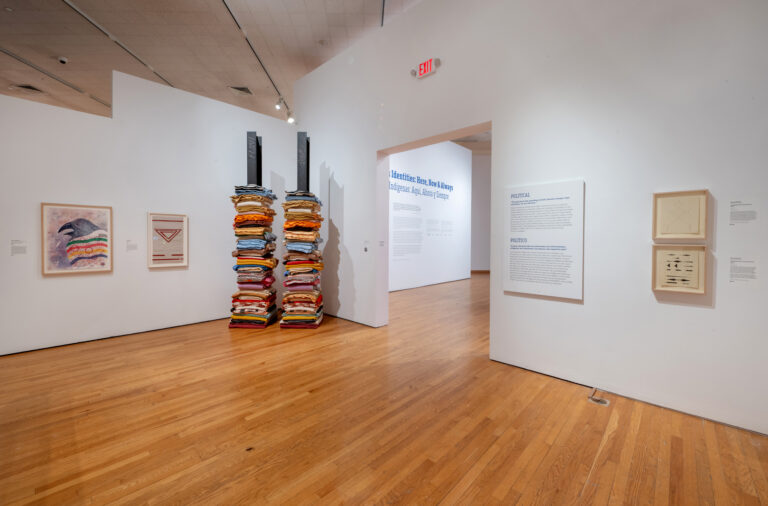
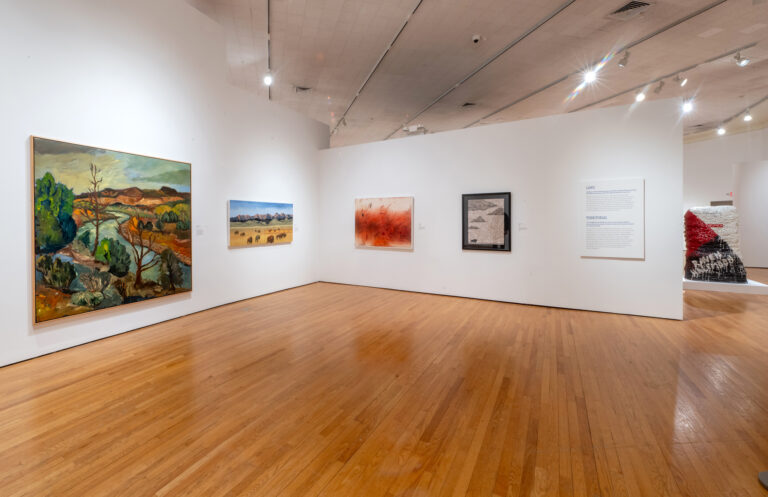
Jaune Quick-to-See Smith, whose influence as both an artist and curator reshaped the narrative of contemporary Indigenous art, passed away on January 24, 2025, just days before the exhibition’s opening. This final curatorial project, realized with the collaboration of her son, Neal Ambrose-Smith (Sqelxʷ (Confederated Salish and Kootenai Tribes of the Flathead Indian Nation) and assistant curator Raven Manygoats (Diné/Navajo), serves as a poignant capstone to her lifelong commitment to elevating Indigenous voices.
Indigenous Identities: Here, Now & Always is more than an exhibition—it is a powerful testament to the legacies of those who have fought to carve space for Native artists in the contemporary art world. It invites audiences to engage deeply with the complexity of Indigenous identities and to recognize their vital, ongoing contributions to the art landscape today.
First image: Installation image of Indigenous Identities: Here, Now & Always at Zimmerli Art Museum, featuring Abstract in Your Home by Neal Ambrose Smith. McKay Imaging Photography. Tia Collection.
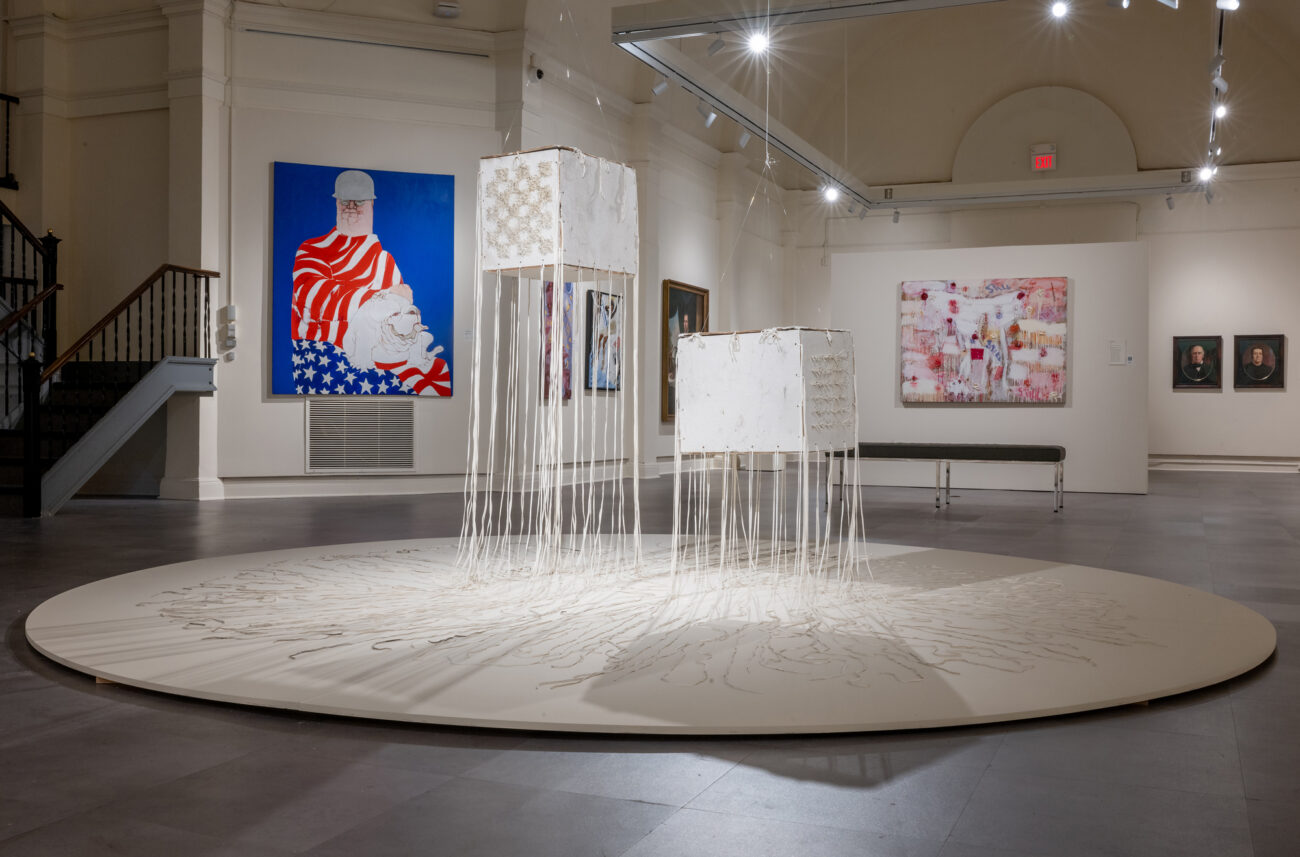
Written and designed by Sarah Greenwood.

